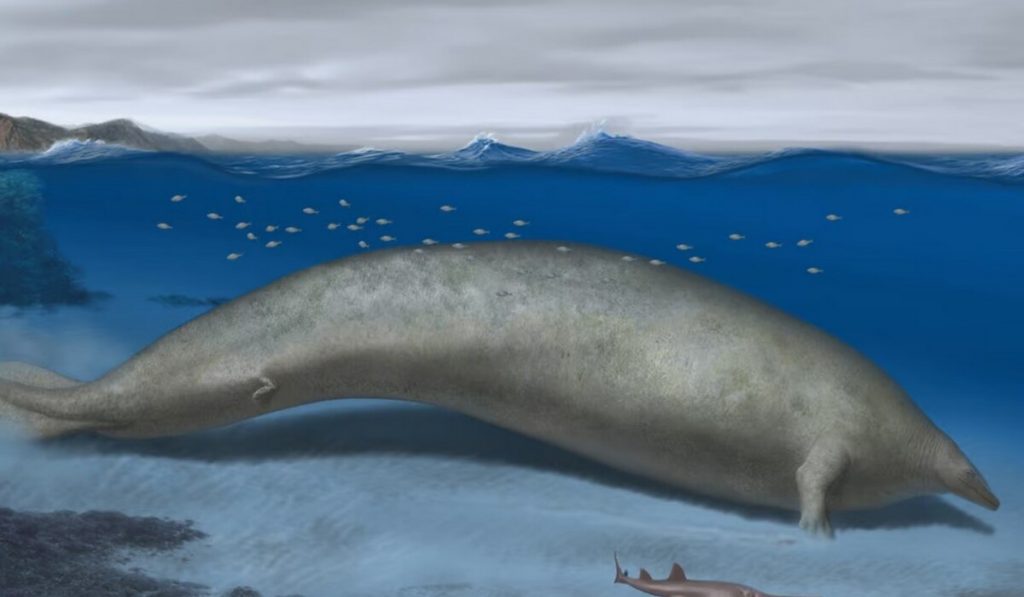The recent discovery of Perucetus colossus, an ancient whale species in the Ica Valley of Southern Peru, has sent shockwaves through the scientific community. For many years, the blue whale has held the title of the largest animal to have ever existed, dwarfing even the largest known dinosaurs. However, Perucetus colossus, with its massive size and unique features, threatens to steal the crown and revolutionize our understanding of whale evolution.
Paleontologists excavating in the Ica Valley made an extraordinary find: 13 vertebrae, four ribs, and a hip bone that belonged to a previously unknown species of whale dating back around 39 million years. The researchers named this gigantic creature Perucetus colossus, a fitting name for such an immense specimen.
Comparing the bones to those of modern whales, the scientists were able to estimate the size and mass of Perucetus colossus. The results were astounding, indicating that this ancient whale grew to a staggering length of approximately 20 meters (65.6 feet) and may have weighed as much as 340 tonnes. In comparison, the largest recorded blue whales generally weigh under 200 tonnes, making Perucetus colossus a true giant of the ocean.
What sets Perucetus colossus apart from its modern counterparts is not just its size but also its physical characteristics. The bones of this ancient whale were heavier and denser than those of present-day whales, suggesting adaptations for better buoyancy control in shallow coastal waters. This finding points to a fully aquatic lifestyle, setting it apart from some early whale relatives that could still venture onto land for brief periods. Despite its fully aquatic nature, Perucetus colossus possessed vestigial legs, a remarkable relic from its terrestrial ancestors.
The implications of this discovery go beyond the sheer size of Perucetus colossus. Prior to this finding, scientists believed that whales evolved to their enormous sizes relatively recently, within the last three million years. However, the new evidence indicating that peak body mass was reached almost 40 million years ago challenges this long-held assumption. This finding demands a reevaluation of the timeline and factors that influenced whale evolution throughout history.
One of the intriguing mysteries surrounding Perucetus colossus is its diet. Without a complete skull, the researchers have not been able to determine with certainty what this ancient giant fed on. It is speculated that it might have consumed fish and crustaceans or even pioneered filter-feeding strategies that were later adopted by baleen whales to consume krill in large quantities. Unraveling the dietary preferences of Perucetus colossus could provide valuable insights into the ancient marine ecosystem and the evolution of feeding behaviors among whales.
The discovery of Perucetus colossus underscores the importance of ongoing research and exploration of our planet’s past. With every fossil discovery, our understanding of Earth’s history and the evolution of life is enriched. As paleontologists continue to unearth more bones and evidence of prehistoric life, the mysteries of the past are slowly unraveled, reshaping our understanding of the world around us.
In conclusion, the revelation of Perucetus colossus as an ancient giant whale species in Southern Peru challenges our previous assumptions about whale evolution. Its massive size and unique features highlight the extraordinary diversity of life forms that have inhabited our planet over millions of years.
As scientists delve deeper into the past, it is inevitable that more remarkable discoveries will emerge, expanding our knowledge of the natural world and its fascinating history. The tale of Perucetus colossus reminds us that there is still much to learn about our planet’s past, and the secrets it holds are waiting to be unveiled by dedicated researchers and explorers.

